
I help gardeners grow
& beginners blossom.
No seed left behind,
no soil unturned.
Together we can have lots of fun growing
great gardens using simple practical tips.
- Featured in -





Start saving & storing your garden seeds for a more more sustainable future
SIGN UP to get the FREE Seed packet PDF
X CLOSE
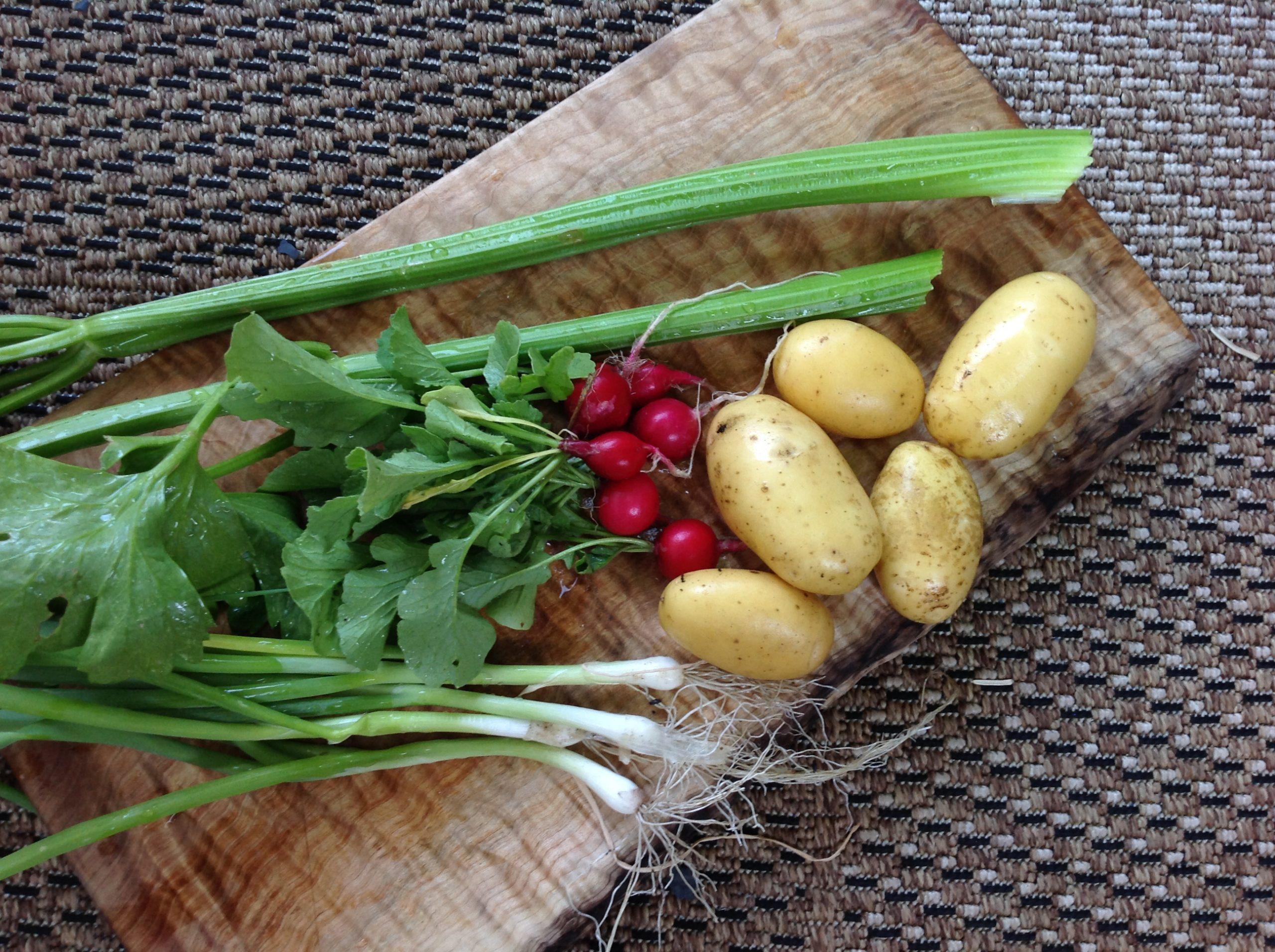
It is Easy Being Green – In March
I was listening to urban farming podcasts again and realized there is another good reason to grow your own food. The professionals aren’t growing unusual food any more. It is just too much work for too little money.
Curtis Stone, Urban Farmer in Kelowna, BC raises less than a dozen crops now and according to one of his online videos. He used to raise and sell 90 different crops.
So if you want to eat something unusual or different it looks like you are going to have to grow it yourself. And I am not talking crazy unusual – although I did try quinoa a couple of years ago and this year I ordered sesame seed!
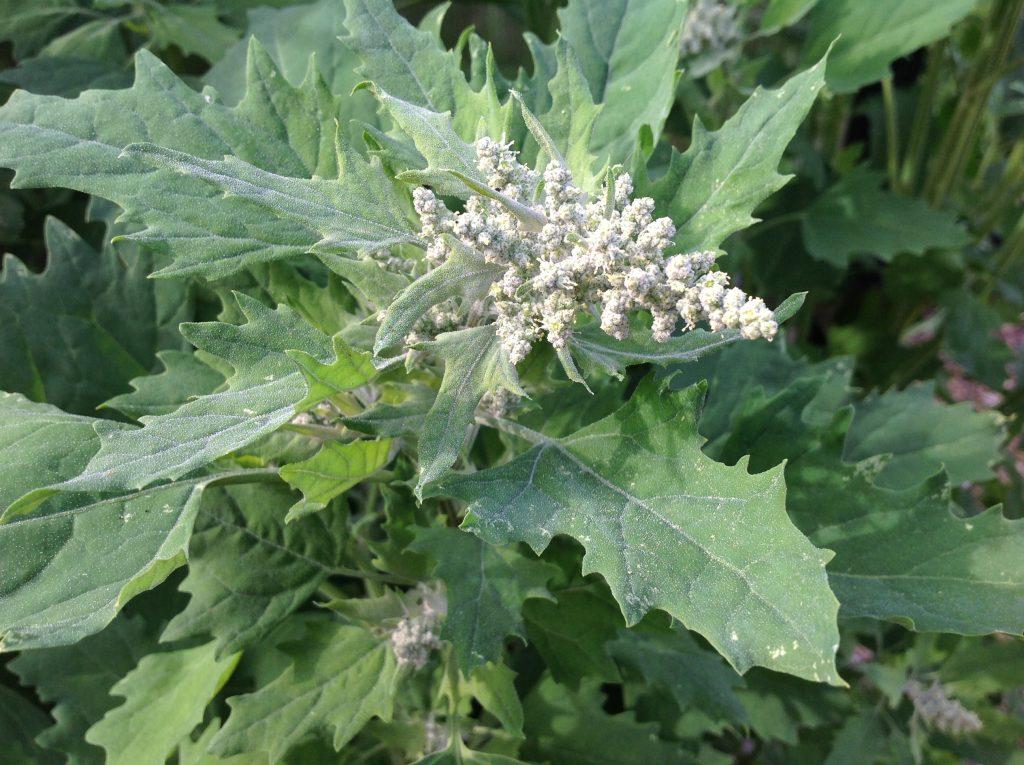
Quinoa has edible leaves and tasty seed that are harvested in fall and stored over winter
I am talking about pretty ordinary stuff like butternut squash, parsnips, beets and home-grown cauliflower. I am thinking of a small patch of watermelons and cantaloupes and yellow wax beans both on the pole and the bush.
A few years ago Helpful Husband asked why I grow anything other than the most cost effective foods and by that he meant the things that are expensive in the stores. I told him I grow my own fresh clean broccoli, my own nutrient dense food and my own local food. I want to grow garlic, even though it is cheap to buy, because 80% of the world’s garlic comes from China and there is something wrong with that. I am growing more potatoes than ever before because even though they are cheap in the store they are the most heavily sprayed vegetables grown commercially and I want clean as well as fresh, local, food.
So recently there was some humble pie served in our kitchen. My Helpful Husband did a price check and found out butternut squash cost more than ten dollars each last week. It might have been 12 dollars or 17 dollars – I can’t remember exactly. What I do remember is that when we first discussed Helpful Husband’s cost-efficient, engineered solution to gardening it was fall and the squash were falling off trucks they were so cheap. HH couldn’t see why I bothered growing them.
Why grow something so cheap to buy? But here it is early March and I served a full-on bright orange butternut squash, for lunch on a freshly made pizza. So even if they were cheap last fall, they are pricey now and he felt he was getting better money value suddenly and I think he enjoyed it a bit more than he did when I first picked them. Or at least he told me he did.
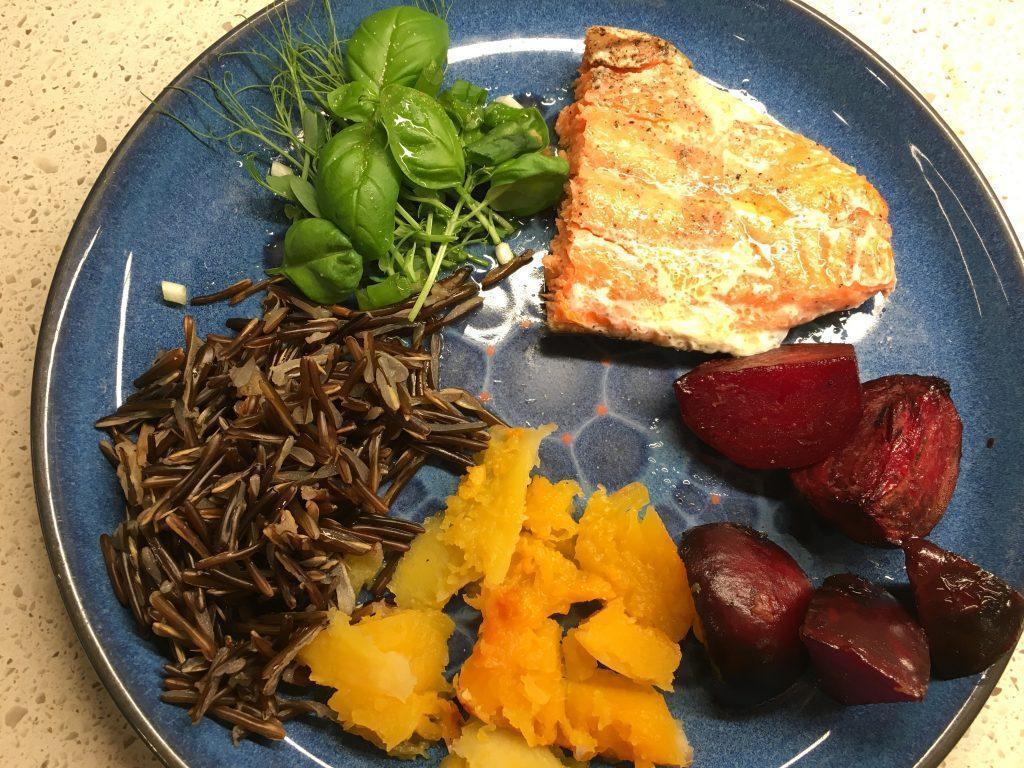
A winter “garden” dinner includes beets and butternut squash saved from my fall harvest as well as freshly grown (under lights) micro-green peas and basil with a dab of orange olive oil. Yummy. The salmon was caught last summer and the wild rice came from Saskatchewan. Below Roscoe also enjoys the greens I grew for him.
I understand the trend for farmers to grow only the most cost-efficient crops on their land and I see where Helpful Husband was going with his gentle suggestion. He wants me to be a farmer. But then again he wouldn’t let me cash in the house to buy that small farm when I made that simple suggestion. So we are still in our land-locked residential lot.
And, as any farmer knows, the best crops grow on a gentle south facing slope. Our lot steeply slopes north. Luckily we have indoor grow-lights to start plants and a BC greenhouse to move things into as the weather warms. My onions are up and all my tomatoes were seeded at the end of February because after tracking my seeding dates in my journal I realized starting them early under lights and moving them into the greenhouse really works for me. I used to start them mid-March under lights for planting outdoors in late May. Now I grow indoors first and then transplant into the greenhouse.

This year’s seeds are just up and it is interesting that the empty holes are where seeds of onions (bought two years ago) should be sprouting. Onion seeds are one of the few types of veg that hate being stored. Better to buy the seed fresh each year
If you have been checking my appearance schedule you will know my free book launch is coming up soon and my talk at Seedy Saturday in Calgary in scheduled for March 17. But this weekend, I am in the bright lights of Toronto, speaking to the crowds at Canada Blooms. Have you been missing my talks? Give me a call and we’ll book something for your business or community. I am working up a talk for a group of Zoo Horticulturists later this summer and a special talk for the Library system in Alberta. No job too big or small.
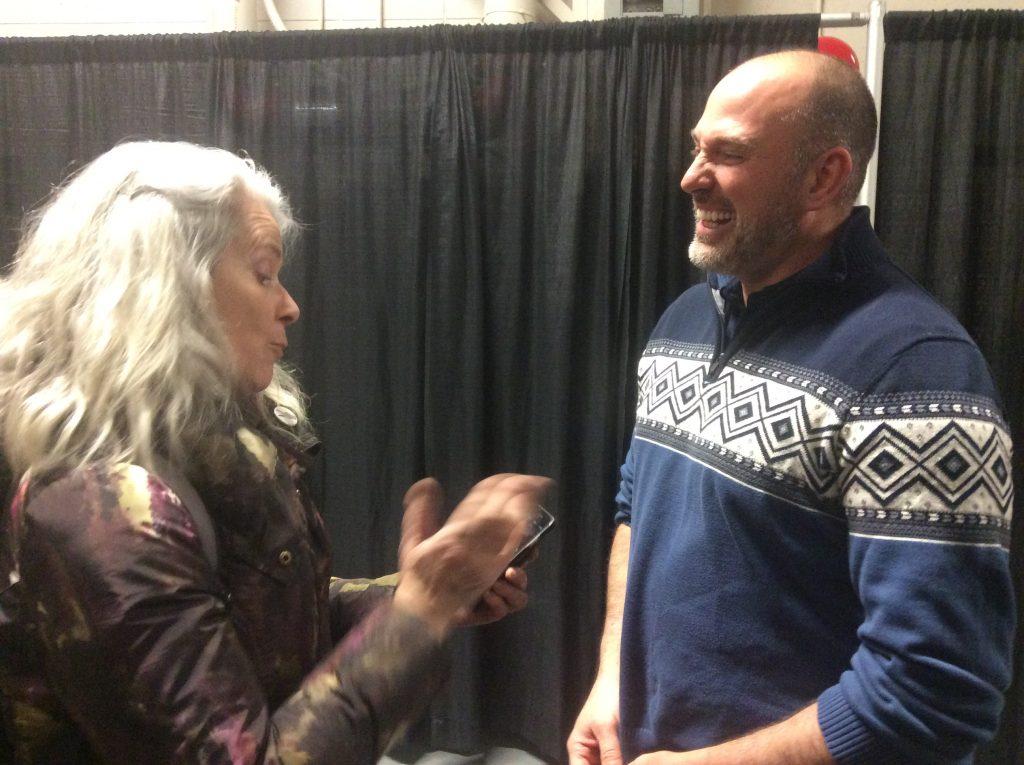
This is an embarrassing bad-hair day photo of me and the fun-loving Speaker Carson Arthur chatting and laughing backstage in Calgary last week after my presentation there.
Since it is March I am hoping you are starting your own tomatoes now. And onions, leeks, shallots and artichokes. If you have a greenhouse, maybe you can start your potatoes like I did, inside the shelter of your glass or plastic house. By the end of the month it is time to think about seeding the other hardy crops indoors like broccoli and cauliflower and early flowers like snapdragons and sweet peas. It’s March and it is easy being green this month. Remember the average piece of organic produce travels 1500 miles between where it is grown and where it is eaten. You can change that this summer in your own back yard by getting started on your garden now.
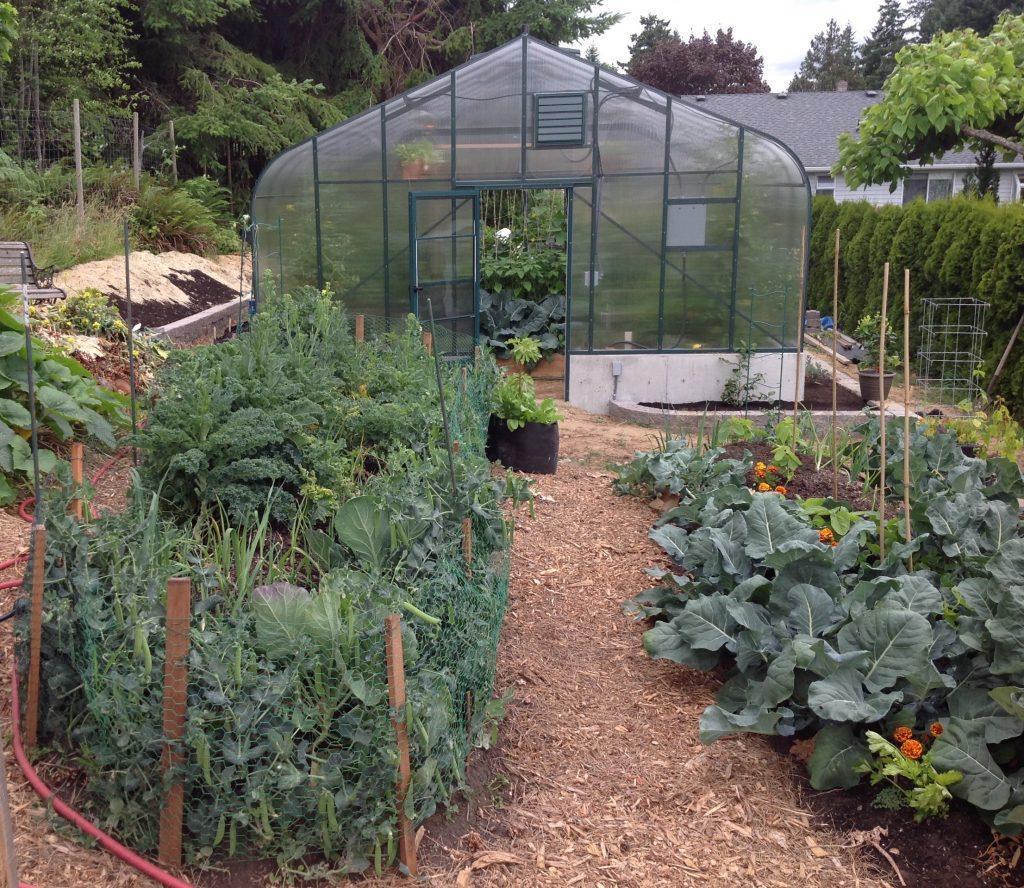
Here is a photo of my home greenhouse last summer. It is the Cross Country model from BC Greenhouse Builders. I grow a lot of food in this house and it is my special place for growing summer tomatoes. Yesterday I multi-seeded Blush and Norstar onions into flats – 3 seeds per cell.
PS Remember “when there is lots of land there is very little incentive to preserve the soil” and “treating soil as a locally adapted biological system rather than a chemical system” is more sustainable. These quotes come from the book DIRT, by David R. Montgomery. Dirt explains how soil is being lost worldwide and how we can switch to sustainable agroecology methods to save soil and yes save our civilization.
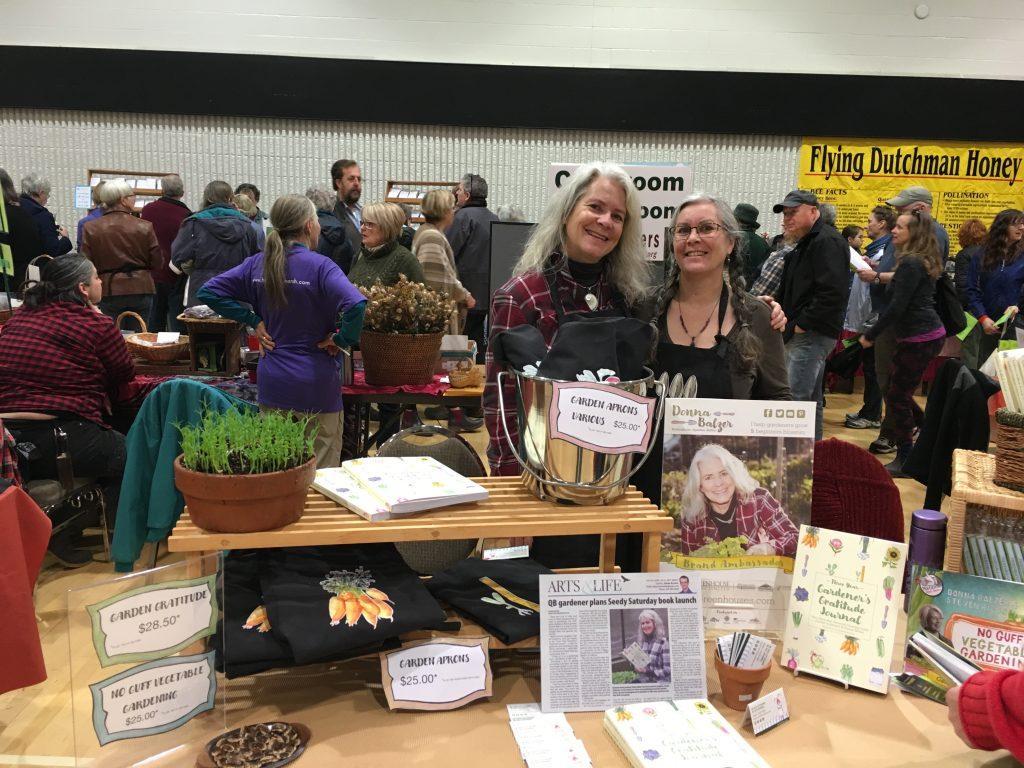
My sister Delima and I sold books at Seedy Saturday in Qualicum Beach last month. Look for me appearing at various talks across Canada this spring or consider bringing me into your community for an event where I can help gardeners grow and beginners blossom.
DONNA BALZER IS THE BRAND AMBASSADOR FOR BC GREENHOUSE BUILDERS AND SHE LOVES GROWING IN THEM TOO!

What Would Donna Do?
Get my growing and gardening tips and pointers throughout the season.





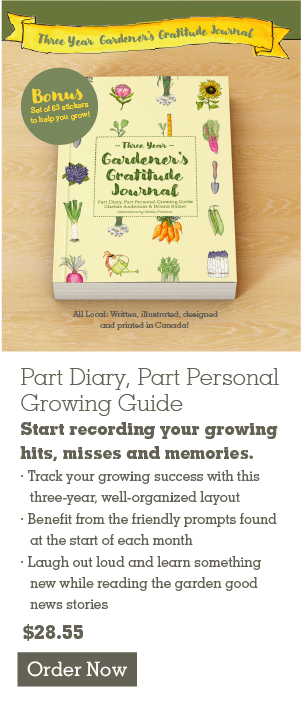





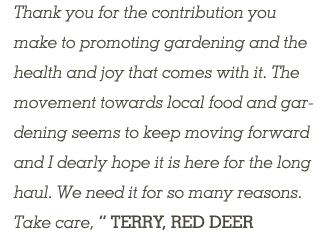
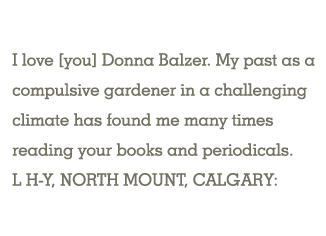
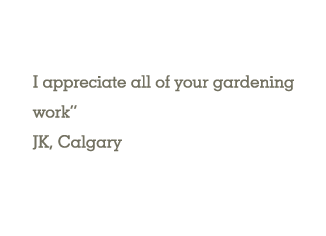

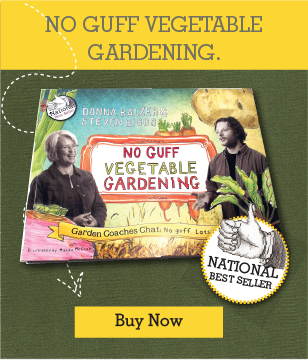
Thanks Amanda!
I also like to balance needy things that like to be picked daily (like beans) and those hardy long-harvest plants like carrots. How did your sunberries and huckleberries work out? Send photos!
Love this post, Donna. I do a balance of growing vegetables that I know are expensive in the store (like beans and tomatoes) and vegetables that will store well over the winter (squash and garlic), and focus more on growing what I really like to eat. Every year I like to try an ‘experimental’ crop. Last year it was sunberries and garden huckleberries, which are in the same family as tomatoes and peppers.